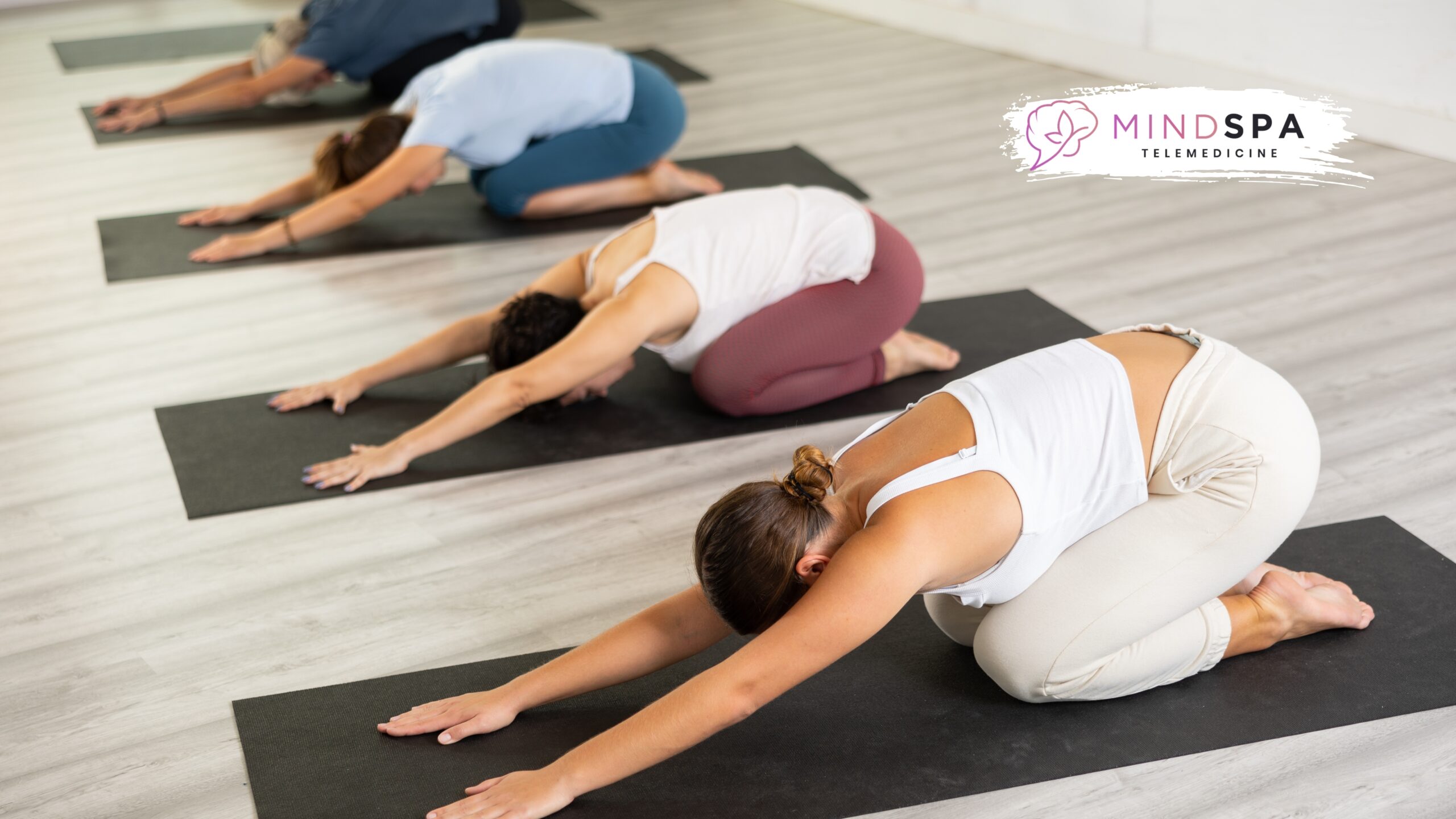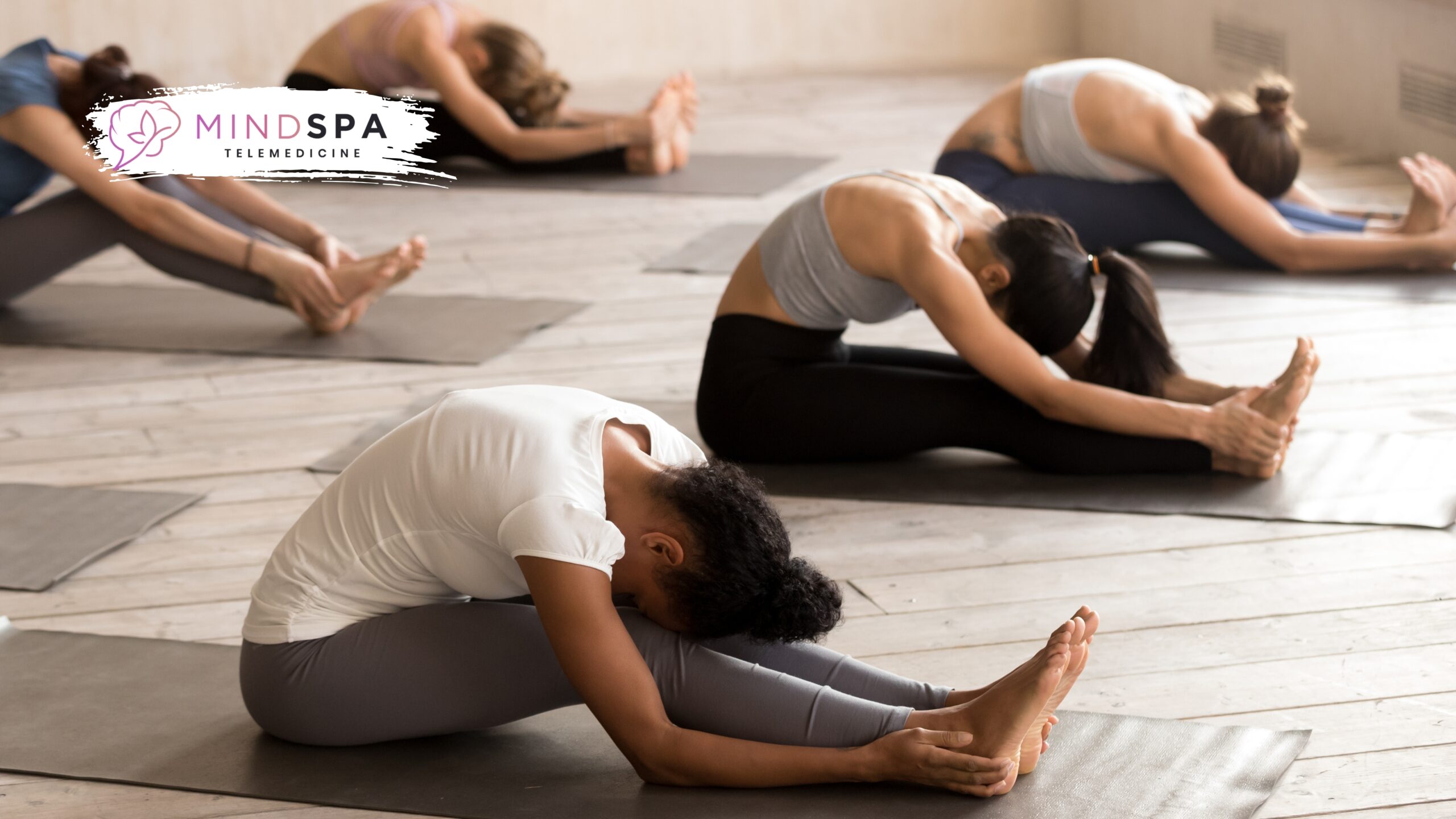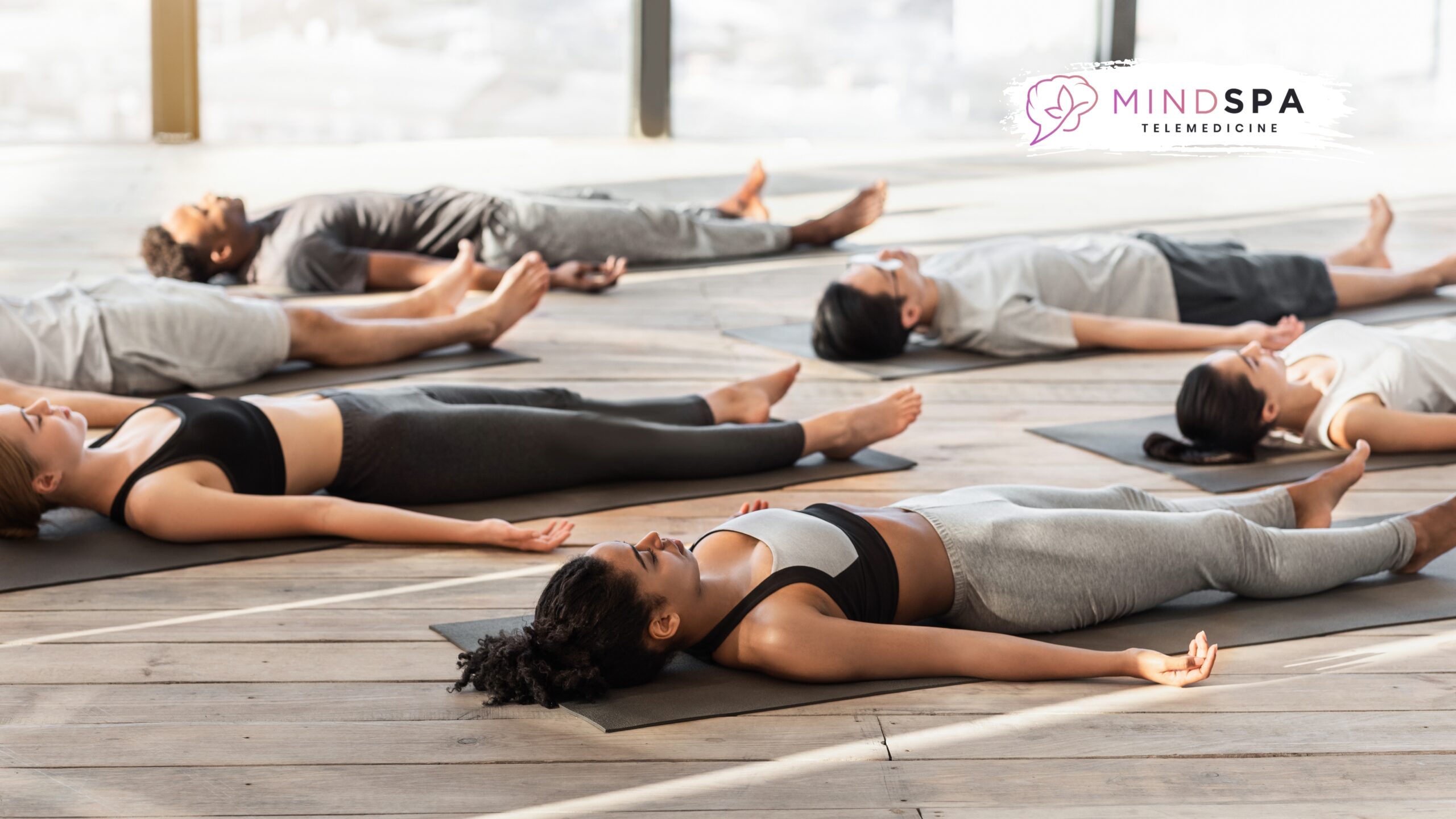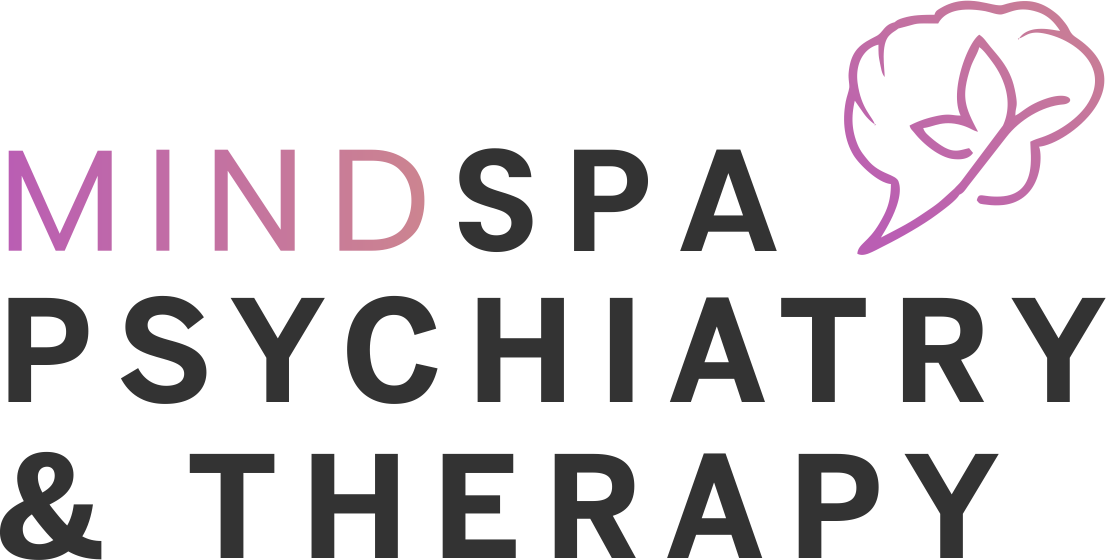Anxiety can feel like a racing mind, a pounding heart, or a stomach full of butterflies. It affects millions of people, making even the simplest tasks feel overwhelming. While therapy and medication are essential tools, there’s another powerful practice you can add to your routine: yoga.
Yoga isn’t just stretching. It’s a calming, grounding practice that helps soothe your nervous system, clear your mind, and bring your body back to balance. At MindSpa Psychiatry & Therapy, we understand how tough anxiety can be, and how helpful the right tools can be in managing it.
In this blog, we’ll walk you through how yoga works to calm anxiety, which poses help the most, and how it can support your overall mental wellness journey.
How Does Yoga Help with Anxiety?
When you’re anxious, your body activates its “fight or flight” system. Your heart races. Your breath shortens. Your muscles tense up. Yoga helps reverse that response.
By combining deep breathing, mindful movement, and relaxation techniques, yoga activates your parasympathetic nervous system—your body’s “rest and digest” state. That means lower cortisol (stress hormone) levels, improved sleep, and fewer anxious thoughts.
You don’t have to be super flexible or fit to practice yoga. Just a few gentle poses and deep breaths can make a noticeable difference in your mood.
Best Yoga Poses to Calm Your Nervous System
Here are some beginner-friendly poses you can try at home to help calm your mind and body:
1. Child’s Pose (Balasana)
This is a comforting pose that gently stretches the back and hips while calming the brain.
How to do it:
Kneel on the floor, sit back on your heels, and stretch your arms forward on the floor. Let your forehead rest on the mat. Breathe deeply for 1-2 minutes.
Why it helps:
This pose creates a sense of safety and relaxation, which slows your breathing and quiets anxious thoughts.

2. Legs-Up-the-Wall (Viparita Karani)
An incredibly calming pose that helps reset your nervous system and improve circulation.
How to do it:
Place your legs on a wall while lying on your back close to it. Keep your arms at your sides in a comfortable position. Spend five to ten minutes here.
Why it helps:
This gentle inversion helps lower your heart rate and blood pressure, perfect for calming an anxious body.

3. Cat-Cow Pose (Marjaryasana/Bitilasana)
This pose combines breath with movement and helps release tension in the spine.
How to do it:
Get on your hands and knees to begin. Exhale as you curve your spine (cat), and inhale as you arch your back (cow). For one to two minutes, move slowly.
Why it helps:
Coordinating breath with movement slows down your thoughts and brings you into the present moment.
4. Seated Forward Fold (Paschimottanasana)
A calming stretch that soothes your nervous system and helps you turn inward.
How to do it:
Sit with your legs extended, and fold forward gently from the hips. Rest your hands on your shins or feet and relax your head.
Why it helps:
This pose encourages deep breathing and stretches your spine, calming your mind and reducing restlessness.

5. Corpse Pose (Savasana)
The final pose in most yoga practices. It’s all about deep relaxation.
How to do it:
Lie on your back with your arms by your sides, palms up. Close your eyes and focus on your breath. Stay for 5–10 minutes.
Why it helps:
Savasana teaches you to let go of tension and reconnect with stillness. It’s a powerful pose for easing anxiety.

Can Yoga Really Help with Anxiety?
Yes, yoga is backed by research as an effective tool for managing anxiety. Regular practice helps reduce symptoms of generalized anxiety disorder, panic attacks, and even PTSD. It’s not a cure-all, but it’s a powerful piece of your mental health toolkit.
Many of our patients at MindSpa Psychiatry & Therapy have told us how even a short yoga practice in the morning or before bed has helped ease their anxiety, improve their sleep, and support their recovery.
Tips for Starting a Yoga Practice
Not sure how to begin with yoga? These simple tips will help you ease into it with confidence and consistency.
- Start small. Even 10 minutes a day makes a difference.
- Breathe deeply. Focus on long inhales and slow exhales.
- Don’t force it. Yoga is about feeling good, not about how flexible you are.
- Stay consistent. Like any habit, the benefits come with regular practice.
- Combine with therapy. Yoga complements psychiatric treatment well.
You can follow along with free videos online or attend a local beginner class. If you’re not sure where to begin, our team at MindSpa Psychiatry & Therapy can help guide you toward resources that work for your lifestyle.
Conclusion
Anxiety doesn’t define you, and it doesn’t have to control your life. Adding gentle yoga into your routine is a simple, effective way to quiet your mind and support your healing journey.
At MindSpa Psychiatry & Therapy, we’re here to help you every step of the way. Whether it’s through therapy, medication, or holistic tools like yoga, our goal is to help you feel like yourself again.
Book a consultation at our Delray Beach, Boca Raton, Lake Worth, West Palm Beach, and Royal Palm Beach, and meet with one of our compassionate psychiatric providers today. Let’s heal your mind for a better tomorrow.
Frequently Asked Questions
Can yoga stop overthinking?
Yes, yoga helps calm the mind by focusing on breath and movement. It reduces mental chatter and brings you into the present moment.
Can yoga cure anxiety?
Yoga may not be a complete cure but it’s a powerful tool. It lowers stress hormones, eases physical tension, and supports emotional balance.
How do you reset your nervous system?
Deep breathing, gentle yoga, and meditation help activate the parasympathetic nervous system. This brings your body out of stress mode and into rest.
What is calming yoga called?
Calming yoga styles include Restorative Yoga, Yin Yoga, and Hatha Yoga. These styles focus on slow movements, deep breathing, and relaxation.
What yoga poses calm the nervous system?
Child’s Pose, Legs-Up-the-Wall, and Savasana are great for calming nerves. These poses help slow your heart rate and soothe anxiety.

